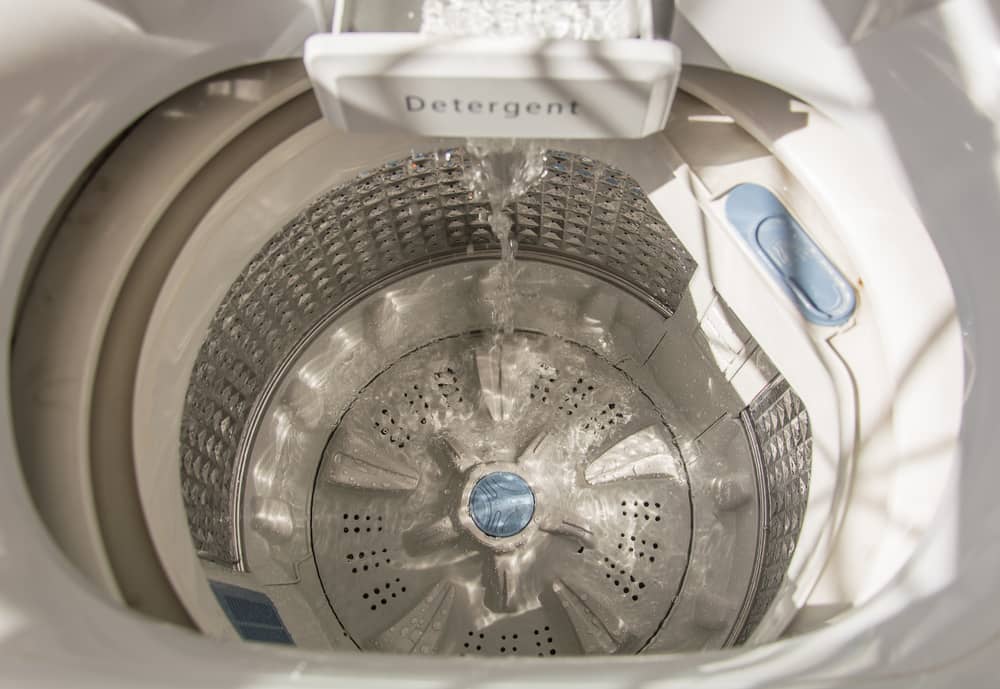Your washing machine works tirelessly, ensuring your clothes are clean and fresh.
But have you ever stopped to think about the cleanliness of the machine itself?
Although it’s regularly filled with soap and water, it doesn’t quite clean itself.
Over time, your washing machine can accumulate dirt, grime and unpleasant odours, which may hamper its performance and lifespan.
Whether your top load washing machine has an agitator or not, knowing how to clean it can make a world of difference.
About Your Top Loader Washer
Before diving into the heart of the matter, let’s understand the basics.
There are two main types of washing machines: a top loader and a front loader washing machine. The primary difference between these two lies in their design and functioning mechanism.
As the name implies, a top loading washing machine is loaded from the top.
It comes in two subtypes: those with an agitator and those without.
The agitator is the large spindle found commonly inside the washing drum. It’s responsible for moving the water and clothes around, helping to deliver a thorough cleaning.
In contrast, top loading machines without an agitator often utilise a technology known as High-Efficiency (HE).
These machines rely on the rotation of the drum to circulate the water and clothes for effective cleaning.
Both types of top loaders have pros and cons, but today we’ll focus on how to clean both versions.
How to Clean a Top Loading Washing Machine With Agitator
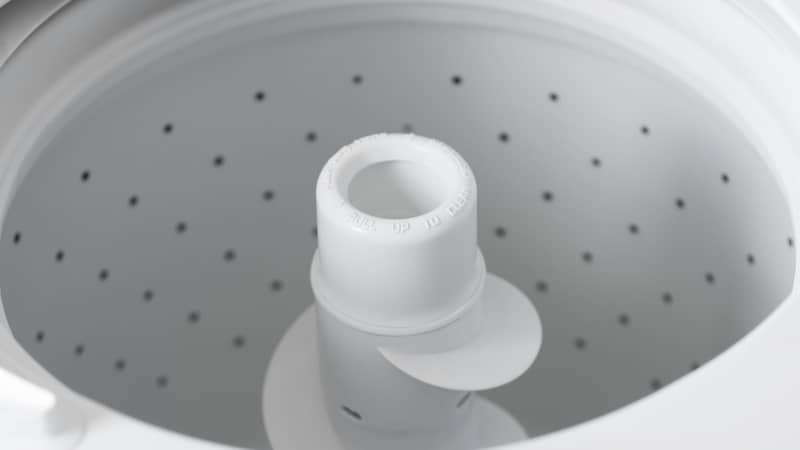
Cleaning a top loader with an agitator requires a simple process:
Step 1: Empty the Washer
Make sure your washer is empty. Remove any items left inside, including clothes or lint.
Step 2: Hot Water Cycle
Set the washing machine to its hottest, largest, and longest cycle. Then start the wash cycle.
Step 3: Add Cleaning Solution
Add 945–1000 mL of white vinegar or a specially formulated washing machine cleaner as the tub is filling.
Step 4: Add Baking Soda
Once the tub is filled, add 236–250g of baking soda.
The vinegar and baking soda will work together to break down any build-up and kill bacteria or mould.
Step 5: Pause the Cycle
Close the lid to allow the cycle to start, and let the agitator mix the vinegar and baking soda.
After 10 minutes, open the lid or pause the cycle to let the cleaning solution soak in the tub for at least an hour.
Step 6: Resume and Finish the Cycle
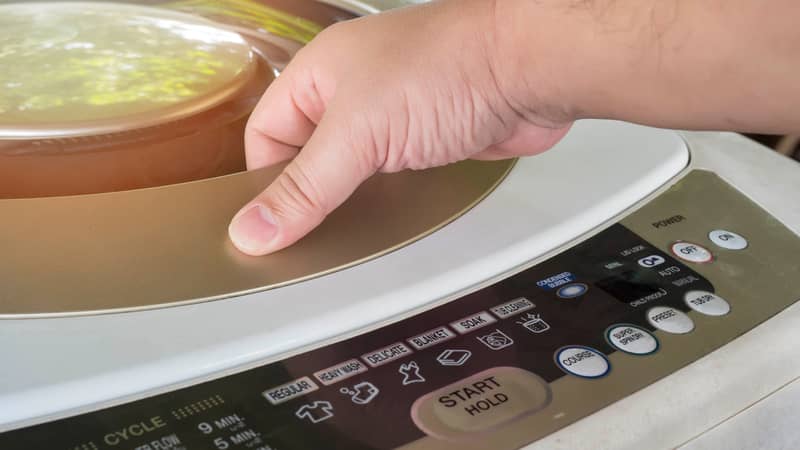
After soaking, close the lid and allow the cycle to complete.
The wash action will help to dislodge and rinse away any remaining build-up.
Step 7: Clean the Agitator
While the cycle is running, create a paste using baking soda and a little water.
Use this paste with a small brush (an old toothbrush is perfect) to scrub around and underneath the agitator.
This area often collects lint, hair and other debris.
Step 8: Run a Second Rinse Cycle
After cleaning the agitator and the first cycle has finished, run another rinse cycle to ensure all the cleaning solution and loosened residue are completely removed.
Step 9: Wipe Down the Drum
Once the second rinse cycle is complete, use a clean cloth to wipe down the inside of the drum, the lid, and any other areas that could harbour residue.
How to Clean a Top Loader Washing Machine Without Agitator
Cleaning a top loader without an agitator involves a very similar process to those with an agitator.
Step 1: Empty the Washer
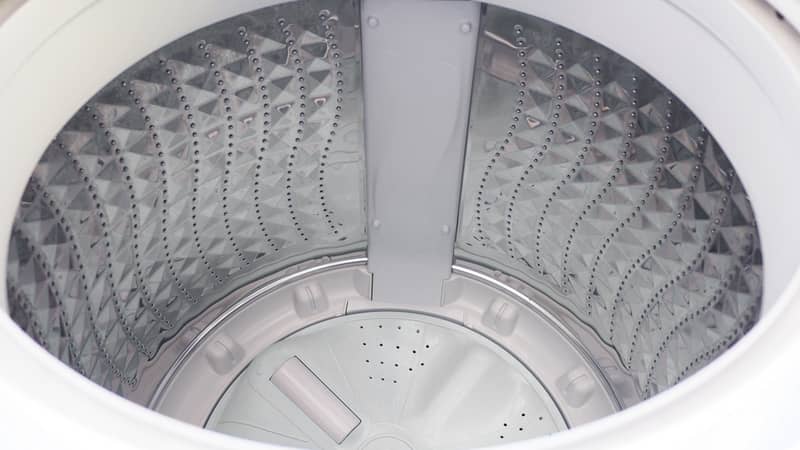
Make sure there’s nothing in the washer drum.
Step 2: Hot Water Cycle
Set your top loading washing machine on the highest, longest and hottest cycle.
Step 3: Add Cleaner
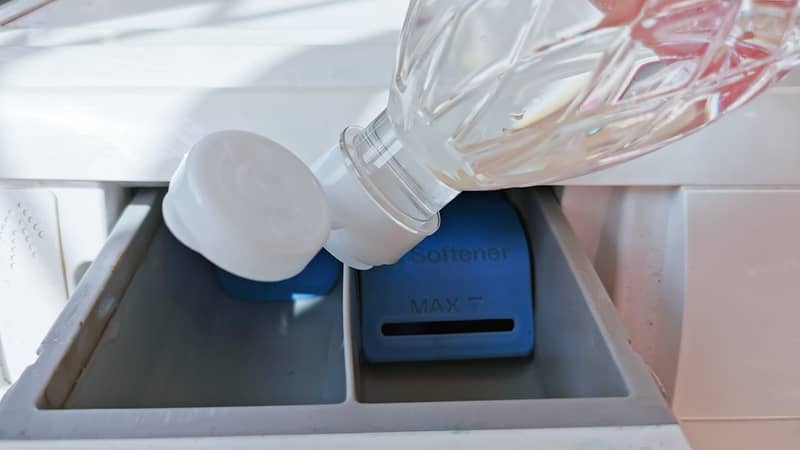
Add a washing machine cleaner or distilled white vinegar (four cups) to the detergent dispenser.
Step 4: Run the Machine
Let the machine run through a complete cycle.
Step 5: Wipe Down
After the cycle ends, use a soft cloth to wipe down the inside of the drum, lid and any other visible areas.
How Often to Clean a Top Load Washing Machine
It’s recommended to clean your top load washer once every one to two months to keep it functioning optimally and smelling fresh.
However, if your washing machine is heavily used or you notice an unpleasant odour or residues, you may need to clean it more frequently.
Bleach or White Vinegar for Cleaning a Washing Machine
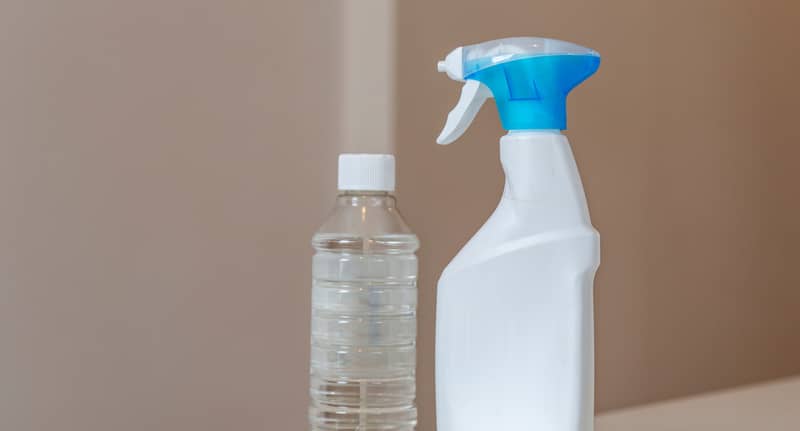
Bleach and vinegar are both effective cleaning agents, but they have pros and cons.
Bleach for Top Loaders
Bleach is an excellent disinfectant and can kill virtually all types of bacteria, viruses and mould.
However, bleach has a very strong smell and can be dangerous if improperly used or mixed with other cleaning products (especially those containing ammonia).
If you choose to clean your washing machine with bleach, make sure your room is well-ventilated, and run an extra rinse cycle afterwards to ensure all the bleach is rinsed out.
Bleach may not be the best choice if your washing machine has a stainless steel drum, as it may corrode or discolour the steel.
White Vinegar for Top Loaders
White vinegar is a natural cleaning agent that helps to remove soap and limescale build-up.
It’s gentler, making it a good choice for routine maintenance and cleaning.
White vinegar is also a natural deodoriser and can help remove foul odours.
However, while white vinegar does have antimicrobial properties, it may not kill as many germs as bleach.
Is bleach or vinegar better for cleaning a washing machine?
White vinegar is a safer and more eco-friendly option for regular maintenance and routine cleanings.
Bleach can be reserved for deep cleans or more severe situations.
Remember never to mix these two substances, as doing so will create harmful fumes.
Tips to Keep Your Top Load Washer Clean for Longer
- Use the Right Amount of Detergent: Overusing detergent can lead to build-up in your machine. Make sure you’re using the correct amount per load.
- Leave the Lid Open: After a cycle, leave the lid open to allow the interior to dry out completely, reducing mildew and odours.
- Regularly Clean the Fabric Softener and Detergent Dispensers: Residues in these areas can cause unpleasant smells and affect machine performance.
- Don’t Ignore Small Loads: Washing a few items on a large setting can throw the machine off balance and cause wear and tear. Always adjust your load size accordingly.
- Clean Regularly: Stick to a cleaning routine. Regular maintenance will extend the life of your machine and improve its performance.
- Clean Your Washing Machine Filter: A top load washing machine filter is typically under the central agitator or by the drain hose. If the filter isn’t there, check the sides of the drum and take it out for a gentle wash and scrub.
FAQs About Cleaning Your Washing Machine
Why should I clean my washing machine regularly?
Over time, residue from detergent, fabric softener and dirty clothes can build up inside your washing machine.
Regular cleaning keeps your machine running smoothly, effectively removes residue and prevents unpleasant odours.
What can I use to clean my washing machine?
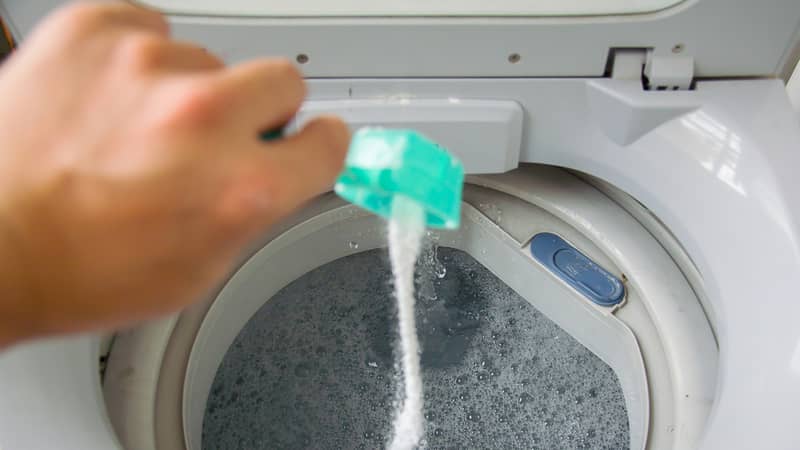
You can use a store-bought washing machine cleaner or natural alternatives such as white vinegar and baking soda.
Both are effective in cleaning and deodorising your machine.
How do I clean the exterior of my washing machine?
Use a damp cloth with a mild detergent to wipe down the exterior.
For tough stains, you can use a mixture of baking soda and water to gently scrub the area.
Can I use bleach to clean my washing machine?
Yes, you can use bleach to clean your washing machine, but make sure to run an extra rinse cycle afterwards to remove all the bleach.
Also, remember to keep the area well-ventilated as bleach fumes can be strong.
How can I remove mould or mildew from my washing machine?
White vinegar is a natural disinfectant that can kill 82% of mould species.
Run a hot water cycle with four cups of vinegar to help eliminate mould and mildew.
If the problem persists, you might need to use a specialised mould-killing product.
Why does my washing machine still smell after cleaning?
If your washing machine still smells after cleaning, there could be a few reasons.
It could be due to a buildup of bacteria in hard-to-reach places, a clogged drain or even issues with your home’s plumbing.
If the odour persists, it may be worth consulting with a cleaning professional or plumber.

